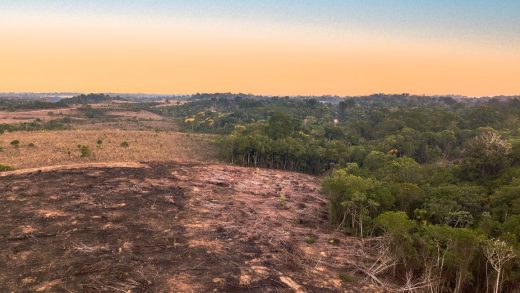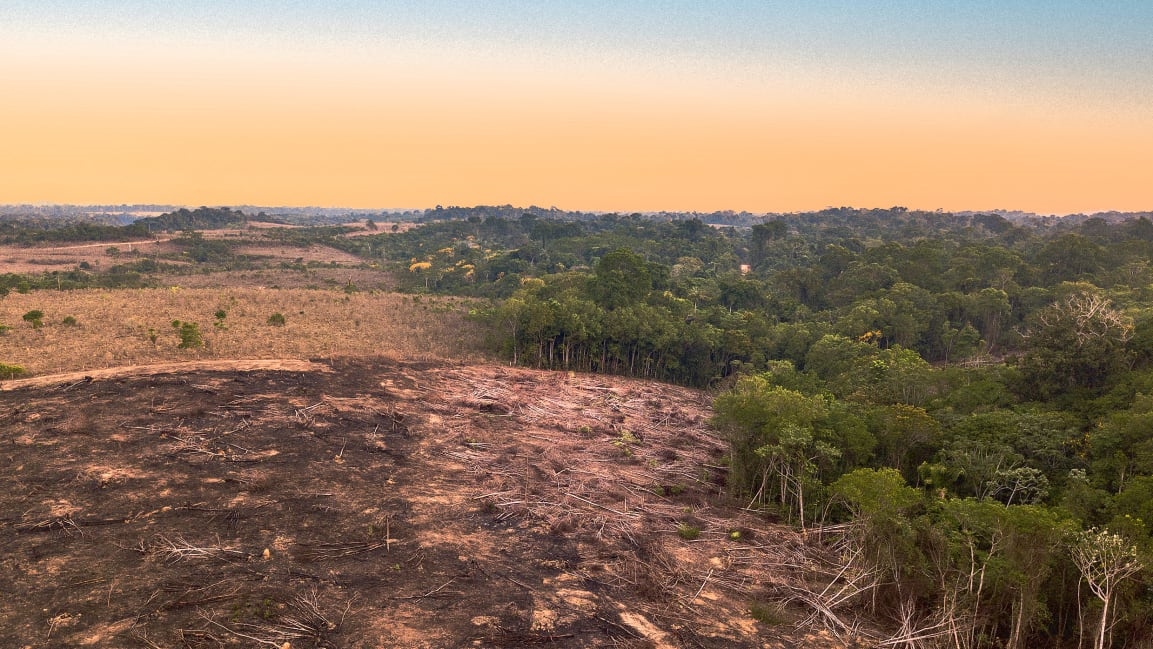The Amazon used to be ‘the lungs of the planet.’ Not anymore
You probably learned a version of the basic climate model of forests in elementary school: Trees capture CO2 and store carbon, emitting oxygen. “That’s as far as most of us go, but there are all of these other ways that forests are interacting with climate,” says Kris Covey, a visiting environmental sciences professor at Skidmore College and one of the authors of the study, published in Frontiers in Forests and Global Change. If trees burn, for example, they emit methane, CO2, nitrous oxide, and carbon black, particles in soot that also warm the atmosphere. Cleared parts of the rain forest are often replaced with cattle ranches that emit even more greenhouse gases. Those emissions mean that even as the remaining trees suck up carbon, when you add in the rest, the basin as a whole is now a net emitter.
Though there’s still uncertainty in the model, the overall picture isn’t good: The other impacts on the climate can offset the benefits of carbon capture in the remaining forest. “When we put all this other stuff on the diagram, it becomes pretty clear that the most likely scenario is that—all things considered—the basin is warming the global climate,” Covey says.
It’s critical to protect the parts of the rain forest that are still standing and to restore other areas, he says, so the area can still absorb as much carbon as possible. “We’ve seen the Amazon transition from being a big carbon sink to being a very small carbon sink. That’s like trying to build a bank account without income. We’ve been doing a lot of spending of our natural capital and not putting a lot of natural capital back in the bank.”
There’s also a more complicated problem: New science is finding that trees are emitting at the same time that they’re sequestering carbon. Trees naturally emit nitrous oxide, chemicals called biological volatile organic compounds, and even methane—a potent greenhouse gas. Under some environmental conditions, these emissions can be considerable, making calculations about a forest’s impact more complex.
This more detailed model of a forest’s positive and negative effects on greenhouse gases may mean that the world can’t rely quite as much on forests as we try to reach a goal of net-zero emissions. “I think it really puts a bold underline on the necessity of reducing emissions of fossil fuels,” says Covey. (Right now, oil companies such as Shell are investing heavily in “nature-based” carbon offsets such as reforestation rather than overhauling their basic business model.) It’s also important to continue to study what’s happening in forests, since the study only looked at one snapshot in time. “The message of this is obviously not to cut more, and it’s obviously not to stop restoring degraded ecosystems,” he says. “I think the message is that if we’re going to lean on them as a key pillar, then we need to invest a lot in understanding them and in as much of the complexity that they offer as we can.”
(43)



